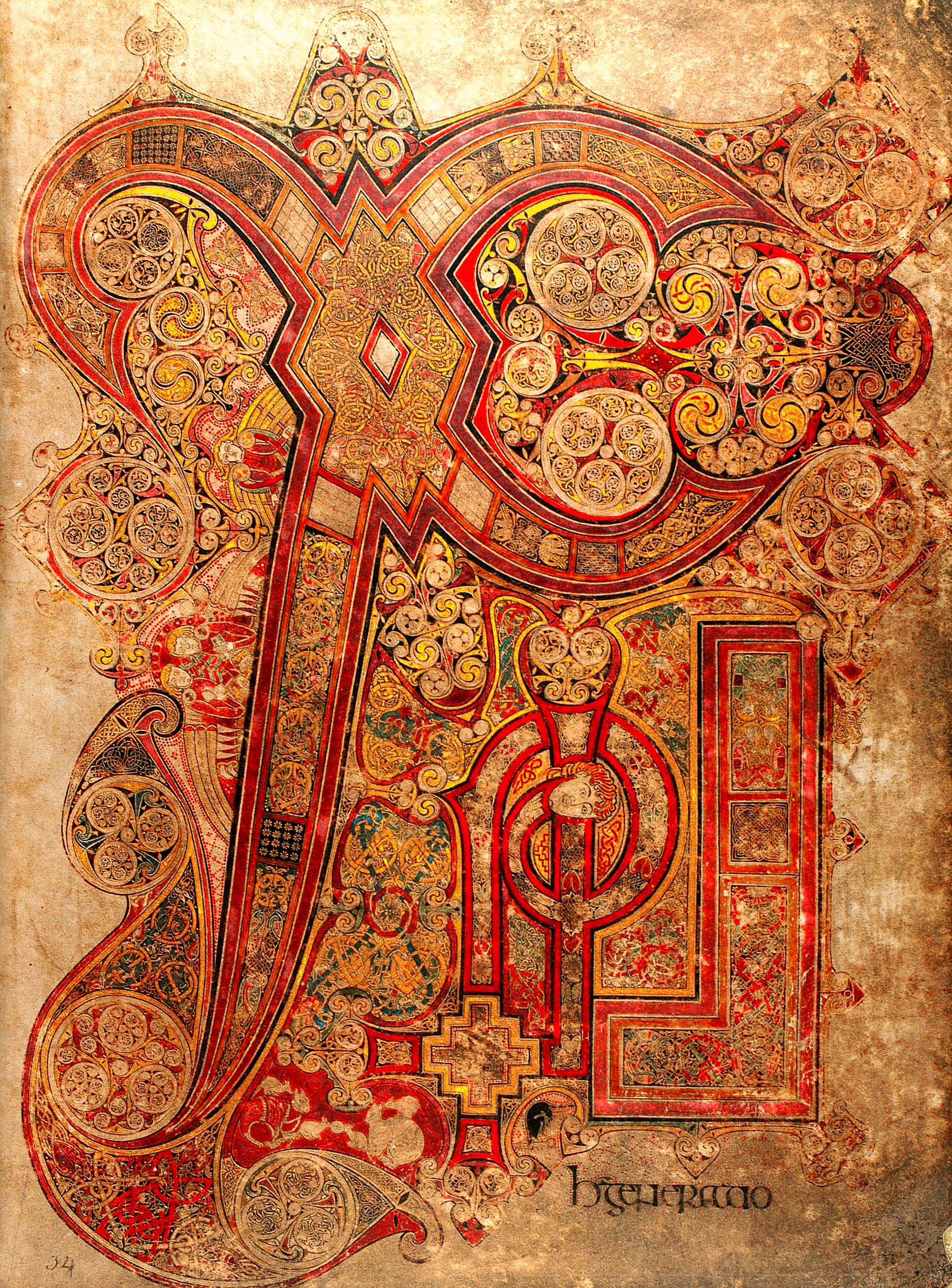The Book of Kells, sometimes known as the Book of Columba, is an illuminated Latin manuscript containing the four Gospels of the New Testament, together with various prefatory texts and tables. It was created in a Columban monastery, probably in Ireland, and may have had contributions from various Columban institutions of both Britain and Ireland. It is believed to have been created around 800 CE. The text of the Gospels used in the Book of Kells is largely drawn from the Vulgate, although it also includes several passages drawn from an earlier version of the Bible known as the Vetus Latina.
The Book of Kells is a masterwork of Western calligraphy and represents the pinnacle of Insular illumination. It is also widely regarded as Ireland's finest national treasure. The decorations are all of high quality and often very complex; in one decoration, which occupies a one-inch square piece of a page, there are 158 complex interlacements of white ribbon with a black border on either side. Some decorations can only be fully seen with magnifying glasses, although lenses of the required power are not known to have been available until hundreds of years after the book's completion. The complicated knotwork and interweaving found in Kells and related manuscripts have many parallels in the metalwork and stone carving of the period. Since their gradual rediscovery from the 19th century on, these designs have had an enduring popularity. Many of these motifs are used today in popular art, including jewellery and tattoos.
This is the famous Chi Rho page (Folio 34r) showing the Greek letters χ (chi), ρ (rho), and ι (iota), the first three letters of the word Christ. The rest of the page is rich with symbolism and imagery, including moths, angels, otters, and two cats attempting to keep a group of mice from eating the Eucharist. The text of the Folio retells the Nativity story as presented in the Gospel of St. Matthew (Matthew 1:18). Today is St. Patrick's Day, which is why we have featured this beautiful Irish manuscript. Have fun today! :)
Zuzanna




Book of Kells
manuscript • -
 Unknown Artist
Unknown Artist